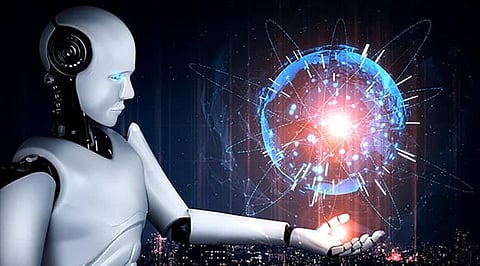
- Insights
- Cryptocurrencies
- Stocks
- White Papers
- Industry
- Geography
- Insights
- Cryptocurrencies
- Stocks
- White Papers
- Industry
- Geography


There might come a time in the future where the cabinets in your kitchen will order groceries on their own after analyzing the stock, thanks to the Internet Of Things.
In technical terms, Google says, "The Internet of Things (IoT) is a system of interrelated computing devices, mechanical and digital machines, objects, animals or people that are provided with unique identifiers and the ability to transfer data over a network without requiring human-to-human or human-to-computer interaction."
In non-technical terms, if you are using a device with an on and off switch and connects to the internet, the way that device works is the IoT. The phone, tablet, or laptop that you are reading this on is also a part of IoT.
In even simpler words, devices connected to the internet, that can talk to each other fall under IoT. For example, wearable devices, Bluetooth headphones, Bluetooth coffee makers, washing machines, voice-activated lights, etc.
Kevin Ashton who worked for P&G in 1999 coined the term Internet Of Things. Though he came up with the name, the concept had already existed under the names of pervasive computing, ubicomp, and ambient intelligence.
In the tech industry, IoT is the new buzzword. The rate at which IoT is growing is directly proportional to the growth of internet-powered devices. Several industries are adopting this concept for mobile devices, industrial equipment, and smart homes, to name a few. Not just this, the concept of 27/7 device connectivity for data and information sharing is facilitating RPA or Robotic Process Automation, a system that allows automation of repetitive tasks.
According to the global management consulting firm McKinsey and Company, IoT is helping the business sector and individuals who expect an interconnected future. In the business sector, IoT can help companies track the status of the goods in their supply chain. When you order a coat online, the channel that allows you to track the shipment works on IoT and RPA.
RPA is an automation platform that helps organizations manage these processes. Going with our previous example of ordering a coat online, without RPA, the process of putting out tracking information would become repetitive and require employees in the back office to manage it. To eliminate this dependency, companies employ RPA software that can manage such tasks and more.
As the digital era is booming, more and more businesses are adopting the capabilities of IoT to transform their business. Together, IoT and RPA can:
• Improve Data Management: While IoT results in the creation of more data, RPA can help businesses turn these data points into meaningful insights to improve their overall business processes. The number of orders placed for that coat, the transaction details, delivery time to a specific location, everything can be mapped out to improve business.
• Send Automated Responses: Let's assume due to bad weather conditions, the shipment of the coat is stuck at a transit location. Instead of depending on an employee to check its status and send you a message, RPA is capable of letting you know about the delay in less time, almost immediately. IoT allows businesses to detect unforeseen circumstances and informs RPA to respond. Together, they solve the crisis of an unexpected situation.
• Optimize Operations: RPA and IoT can help a business make better judgments regarding their systems and resources. These systems can help a company improve its output by making customer experiences easier. Moreover, RPA allows businesses to cut back on mundane manpower and use their potential elsewhere, saving a lot of costs.
There is no stopping for the growth of IoT. The Internet Of Things is making businesses smarter with its ability to send and receive information 24/7. Organizations have started to realize the potential and are using it to be more connected to the world around them to do a meaningful, higher quality of work. Next time you use an IoT-powered device, think about the loop you are going to be a part of.
